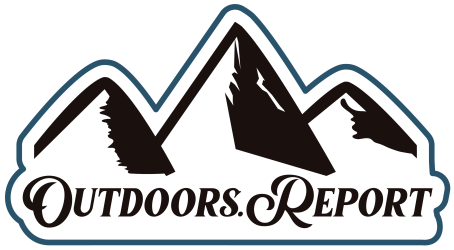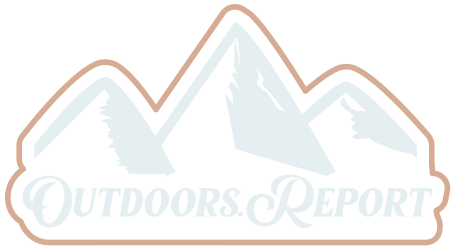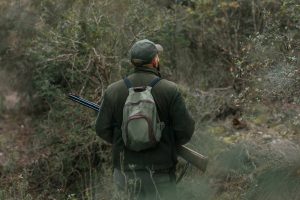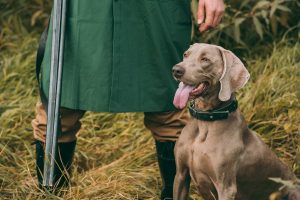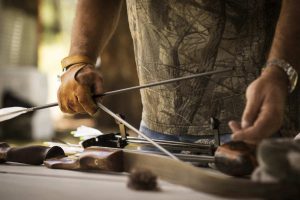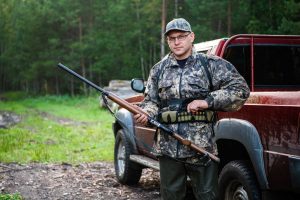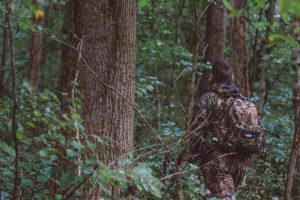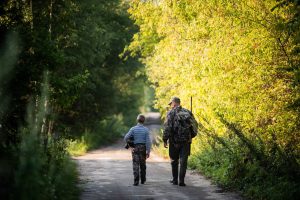Hunting is an activity that offers a wide range of benefits and experiences. It can provide a sense of accomplishment and a connection to nature and the outdoors. However, it’s also important to be aware of the potential dangers of hunting and take the necessary steps to stay safe. This blog post will provide tips on how to stay safe while hunting, from the safety gear you should use to the essential pre-hunting checklist. Whether you’re a beginner or an experienced hunter, these tips will help you stay safe and enjoy your hunting experience.
Hunting involves the use of firearms, and even experienced hunters can make mistakes that can cause serious injury or death. In addition, hunters must be aware of the environment and their surroundings in order to avoid dangerous situations such as coming into contact with wild animals or other hunters. By taking the proper precautions, hunters can minimize the risks and enjoy a safe and successful hunt.
Safety Gear
Safety gear is one of the most important components of a successful and safe hunting experience. From the clothing that you wear to the firearms and accessories that you use, having the right safety gear is essential for a successful and safe hunting experience. In this section, we will discuss the different types of safety gear that you should use when hunting, from clothing to firearms and accessories. By taking the time to properly equip yourself with the appropriate safety gear, you can ensure that you have a safe and successful hunt.
Clothing
When it comes to hunting, the clothing that you wear is an essential part of your safety gear. It is important to wear clothing that is appropriate for the environment you are hunting in, as well as for the type of hunting you are doing. For example, if you are hunting in an area with thick brush or tall grass, you should wear clothing that is designed to provide good visibility and camouflage. This may include a blaze orange vest or jacket, as well as a hat and gloves to keep you warm and dry. Additionally, it is important to wear sturdy boots that provide good grip and traction, as well as ankle support.
Typical hunting terrain and their appropriate safety clothing include:
- Thick Brush or Tall Grass: blaze orange vest or jacket, hat, gloves, and sturdy boots with good grip and ankle support.
- Open Fields: blaze orange vest or jacket, hat, gloves, and sturdy boots with good grip and ankle support.
- Wet Weather Areas: waterproof jacket and pants, hat, gloves, and waterproof boots.
- Mountainous Areas: warm, layered clothing, hat, gloves, and sturdy boots with good grip and ankle support.
- Desert Areas: lightweight, breathable clothing, hat, gloves, and sturdy boots with good grip and ankle support.
Wearing clothing that is too loose or ill-fitting can be dangerous, as it can get caught on branches or other objects and increase the risk of an accident.
Firearm Safety Gear
In addition to wearing the right clothing, it is also important to use the right firearms and accessories when hunting. It is important to use a firearm that is appropriate for the type of hunting you are doing, as well as one that is in good condition. Additionally, it is important to use the proper safety accessories, such as a sling, a gun case, and eye and ear protection.
Some of the most important firearm safety accessories include:
- Sling: A sling is important because it helps keep your firearm securely attached to your body, which makes it easier to carry and prevents it from being dropped or damaged.
- Gun Case: A gun case is important because it helps protect your firearm from the elements and prevents it from being damaged.
- Eye Protection: Eye protection is important because it helps protect your eyes from flying debris and from the bright flash of a firearm when it is fired.
- Ear Protection: Ear protection is important because it helps protect your ears from the loud noise of a firearm when it is fired.
When hunting it is important to not use any type of ammunition that is not approved for the firearm you are using, as it can lead to serious injury or death. Also, it is important to never use a firearm that is not in good condition or that is not appropriate for the type of hunting you are doing.
Hunting Accessories
In addition to the proper clothing and firearms, it is also important to use the proper accessories when hunting. This includes items such as binoculars, a knife, a flashlight, a compass, and a first aid kit. These items can help you stay safe and prepared while hunting, as they can help you stay informed, navigate the terrain, and be ready for any unexpected incidents. Additionally, it is important to ensure that all of your accessories are in good condition and are appropriate for the type of hunting you are doing. By having the right accessories, you can ensure that you are prepared for a safe and successful hunt.
Some of the most important safety accessories to bring hunting include:
- Binoculars: Binoculars are important because they help you stay informed of your surroundings and can help you spot animals or other hunters from a distance.
- Knife: A knife is important because it can be used for a variety of tasks, from cutting rope to preparing food.
- Flashlight: A flashlight is important because it can help you navigate in low-light conditions and can provide additional visibility when needed.
- Compass: A compass is important because it can help you stay on course and find your way back to camp or your vehicle if you become lost.
- First Aid Kit: A first aid kit is important because it can provide essential supplies for any unexpected incidents.
Hunting Safety Techniques
In addition to safety gear, there are also certain techniques and practices that hunters should utilize in order to stay safe while hunting. These techniques include staying informed about the environment, scouting the area before hunting, and using caution when hunting. By following these techniques and practices, you can ensure that you have a safe and successful hunt. In this section, we will discuss the different hunting safety techniques that you should utilize in order to stay safe while hunting.
Staying Informed
One of the most important hunting safety techniques is to stay informed about the environment. This includes staying up to date on weather forecasts, as well as researching the area before you hunt. Additionally, it is important to be aware of any local hunting regulations, as well as any restrictions or closures in the area. By staying informed and researching the area, you can ensure that you are hunting safely and responsibly.
Hunters can use a variety of resources to get weather forecasts before the hunt, such as local news outlets, The National Weather Service website, and weather radio. Additionally, most hunting gear stores, and outdoor retailers will have the most up-to-date information and forecasts available.
Hunters can use a variety of resources to learn about local hunting regulations and restrictions before the hunt, such as state game and fish websites and local hunting clubs. Additionally, it is important to check with local land owners or managers to find out if there are any additional restrictions or closures in place. By taking the time to research the area and check for any regulations or restrictions before the hunt, you can ensure that you are hunting safely and responsibly.
Scouting
In addition to staying informed, it is also important to scout the area before you hunt. This includes walking the area to become familiar with the terrain and to look for any potential dangers. Additionally, it is important to look for signs of wildlife, such as tracks or droppings, as this can help you determine where the animals may be located.
Scouting should include gathering information on the following:
- Terrain: Look for any potential obstacles or hazards, such as steep hills or cliffs, as well as any areas that may be difficult to navigate.
- Wildlife: Look for signs of wildlife, such as tracks or droppings, as this can help you determine where the animals may be located.
- Water Sources: Look for any water sources, such as streams, lakes, or ponds, as this can be a good spot to find animals.
- Vegetation: Look for areas with thick vegetation or tall grass, as this can provide cover for animals.
- Other Hunters: Look for any signs of other hunters, such as vehicles or campsites, as this can help you determine where not to hunt.
Using Caution
The final hunting safety technique is to use caution when hunting. This means being aware of your surroundings at all times and refraining from taking unnecessary risks. Additionally, it is important to never hunt alone and to always have a plan in case of an emergency. By using caution and following safe hunting practices, you can ensure that you have a safe and successful hunt.
When using caution while hunting, it is important to avoid taking unnecessary risks. This includes refraining from shooting at moving targets or at targets that are too far away or too close. Additionally, it is important to never hunt alone and to always have a plan in case of an emergency. Finally, it is important to never consume alcohol or drugs while hunting, as this can impair judgment and increase the risk of an accident.
Pre-Hunting Safety Checklist
Before you go on a hunting trip, it is important to go through a pre-hunting safety checklist. This checklist should include items such as checking the weather, reviewing maps of the area, and making sure you have all of the necessary supplies. By taking the time to go through this checklist, you can ensure that you are prepared for a safe and successful hunt. In this section, we will discuss the different items that should be included in a pre-hunting safety checklist.
Weather
The first item on a pre-hunting safety checklist should be to check the weather. This includes checking the local weather forecast and researching the area to find out what kind of weather can be expected. Additionally, it is important to be aware of any extreme weather conditions that could be present, such as high winds or lightning.
If a hunter encounters extreme weather conditions while hunting, it is important to take cover immediately. This means finding a safe place to shelter from the weather, such as a vehicle or a nearby building. Additionally, it is important to be aware of your surroundings and to avoid any potential hazards, such as flooded areas or downed power lines.
Maps
Another important item on a pre-hunting safety checklist is to review maps of the area. This includes researching the area and becoming familiar with the terrain, as well as any potential hazards or obstacles that may be present. Additionally, it is important to be aware of any restricted or closed areas, as well as any areas that may be off-limits to hunting.
When reviewing maps of an area before a hunt, it is important to look for any potential hazards or obstacles, such as steep hills or cliffs. Additionally, it is important to be aware of any restricted or closed areas, as well as any areas that may be off-limits to hunting. It is also important to research the area and familiarize yourself with the terrain, as well as any water sources or vegetation that may be present.
Supplies
The final item on a pre-hunting safety checklist is to make sure you have all of the necessary supplies. This includes items such as food, water, and any additional safety gear or accessories that you may need. Additionally, it is important to make sure that all of your supplies are in good condition and are appropriate for the type of hunting you are doing.
These are some of the most important supplies for your pre-hunt checklist:
- Food: Food is important because it provides energy and helps keep you alert and focused.
- Water: Water is important because it helps keep you hydrated and can help prevent dehydration and fatigue.
- Safety Gear: Safety gear is important because it helps keep you safe and protected while hunting.
- Accessories: Accessories are important because they can help you stay informed, navigate the terrain, and be ready for any unexpected incidents.
- First Aid Kit: A first aid kit is important because it can provide essential supplies for any unexpected incidents.
Safety First When Hunting
Hunting is an activity that offers a wide range of benefits and experiences. However, it’s also important to be aware of the potential dangers of hunting and take the necessary steps to stay safe. By taking the time to equip yourself with the appropriate safety gear, utilizing hunting safety techniques, and going through a pre-hunting safety checklist, you can ensure that you have a safe and successful hunt. Whether you’re a beginner or an experienced hunter, these tips will help you stay safe and enjoy your hunting experience.
More Hunting Posts
Tylor Bennett
An editor at Outdoors ReportTylor Bennett is a senior editor for the blogzine and also reports on breaking news based in London. He has written about government, criminal justice, and the role of money in politics since 2015.
0 comments
Leave a reply
Your email address will not be published. Required fields are marked *A Beginner’s Guide to Backpacking

